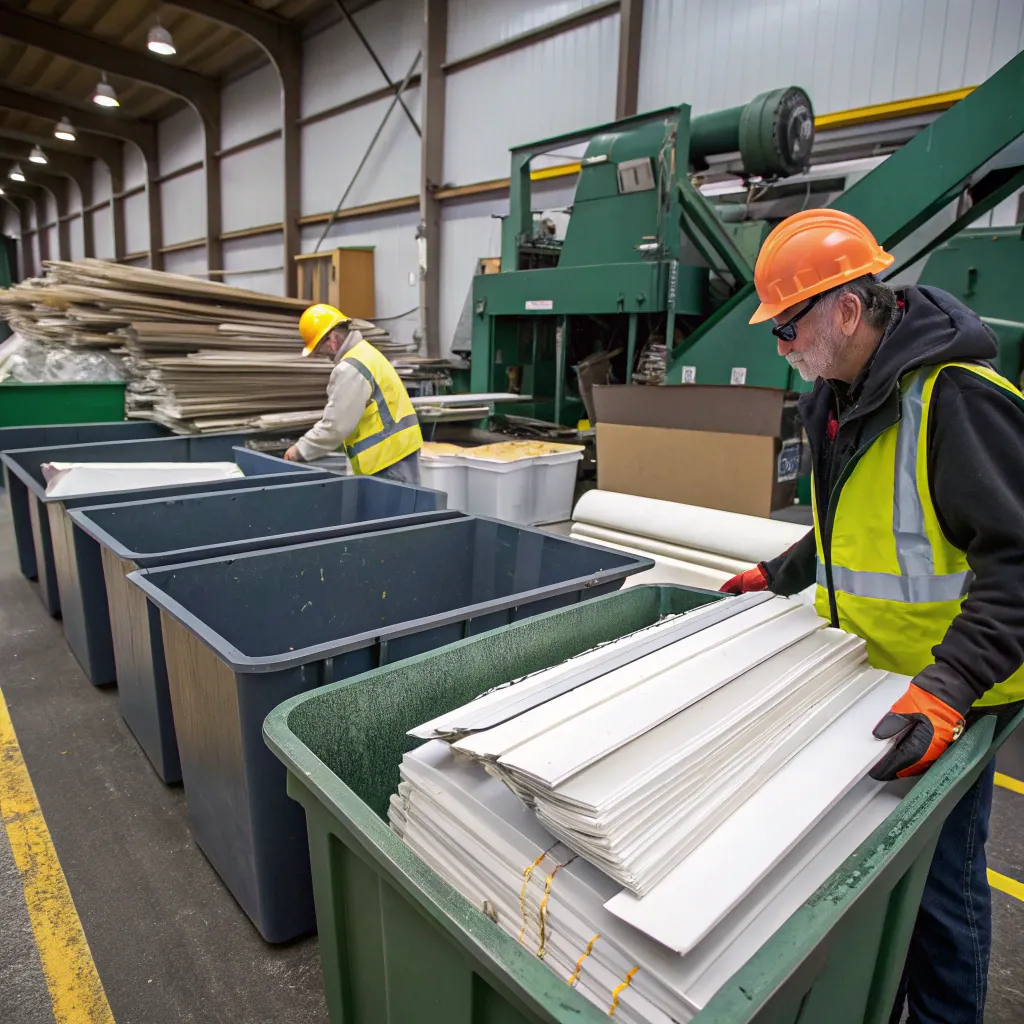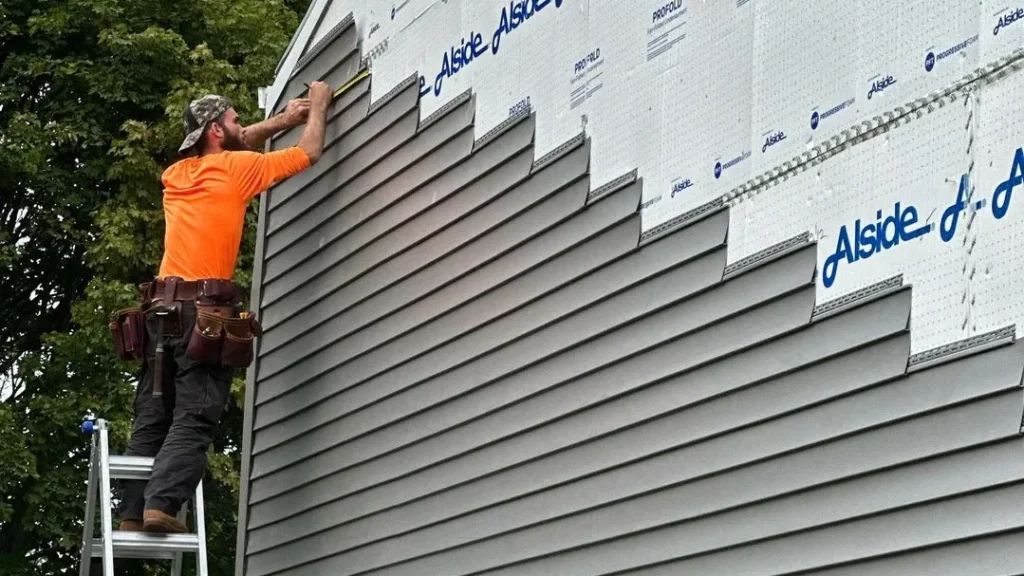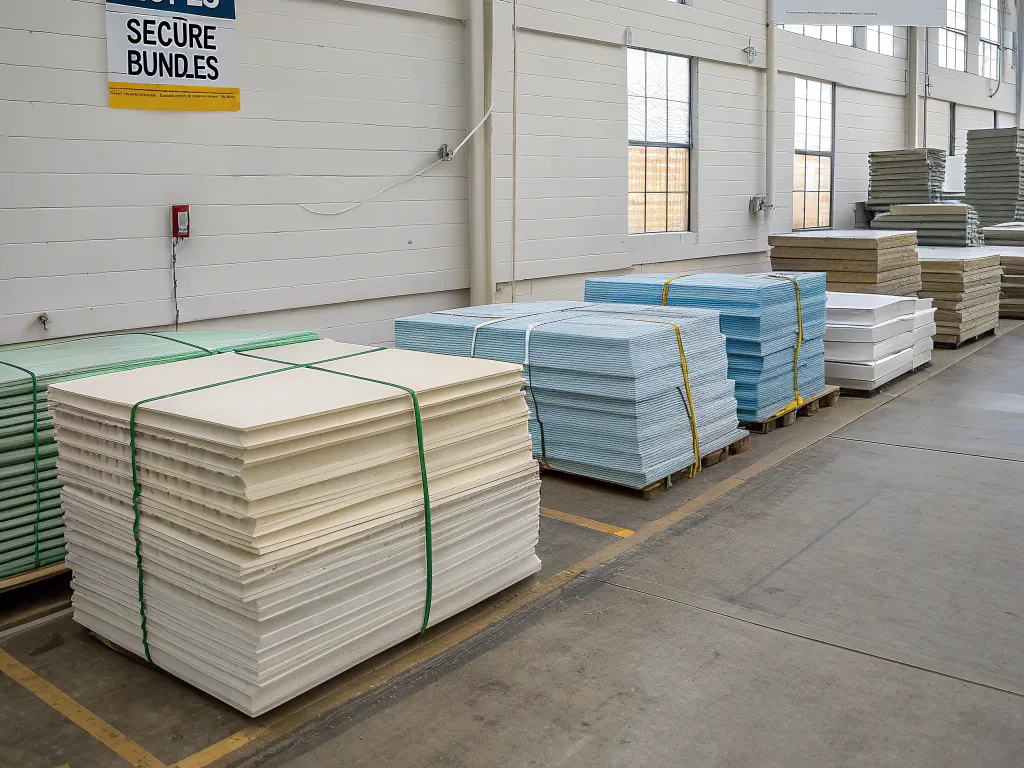Vinil sporedni kolosjek naširoko se koristi zbog svoje izdržljivosti i malog održavanja, ali što se događa kada dođe do kraja svog vijeka trajanja? Recikliranje je održivo rješenje, a uz pomoć strojevi za recikliranje vinila, proces postaje još učinkovitiji. Ovaj vodič će vas provesti kroz osnove recikliranja vinilnih obloga, uključujući ulogu specijaliziranih strojeva u olakšavanju procesa i ekološki prihvatljivijem.
Zašto reciklirati vinilne obloge?
Recikliranje vinilnih obloga bitno je iz nekoliko razloga, od smanjenja utjecaja na okoliš do prenamjene vrijednih materijala. Evo zašto biste mu trebali dati prioritet:
1. Utjecaj na okoliš
Vinilne obloge, izrađene od polivinil klorida (PVC), nisu biorazgradive i mogu proći stoljeća da se razgrade na odlagalištu. Recikliranje pomaže:
• Smanjite otpad na odlagalištima
• Niže emisije stakleničkih plinova povezana s novom proizvodnjom PVC-a
• Očuvati prirodne resurse, jer je potrebno manje sirovina
2. Ekonomske koristi
• Ušteda troškova na naknade za zbrinjavanje, budući da je recikliranje često jeftinije od odlaganja na odlagalište.
• Mogućnosti zarade za reciklirane materijale, koji se mogu preprodati proizvođačima.
3. Usklađenost s propisima
Neke regije nalažu recikliranje građevinskih materijala, uključujući vinilne obloge. Ispravno recikliranje osigurava da ostanete u skladu s lokalnim propisima.
Uloga strojeva za recikliranje vinila
Što su strojevi za recikliranje vinila?
Strojevi za recikliranje vinila su specijalizirana oprema dizajnirana za preradu starih vinilnih obloga u materijale za višekratnu upotrebu. Ovi strojevi melju, usitnjavaju ili tope vinil, pretvarajući ga u male kuglice ili prah za proizvodnju novih proizvoda.
Prednosti korištenja strojeva za recikliranje vinila
• Učinkovitost: Strojevi brzo obrađuju velike količine.
• Dosljednost: Proizvodi ujednačen materijal za visokokvalitetno recikliranje.
• Uštede okoliša: Smanjuje ugljični otisak postupaka recikliranja.
Vrste strojeva za recikliranje vinila
1. Sjeckalice: Rastavite vinilne obloge na manje komade kojima se može upravljati.
2. Granulatori: Daljnja obrada usitnjenog vinila u fine granule ili pelete.
3. Ekstruderi: Rastopite vinil i pretvorite ga u upotrebljive oblike ili materijale.
Kako podržavaju kružno gospodarstvo
Reciklirani vinil iz ovih strojeva koristi se za stvaranje novih proizvoda, kao što su:
• Vinil sporedni kolosjek
• Podovi
• Cijevi i spojni dijelovi
Kako pripremiti vinilne obloge za recikliranje
Prije recikliranja vašeg vinilnog sporednog kolosijeka, pravilna priprema osigurava da proces teče glatko:
1. Uklonite materijale koji nisu vinilni
Odvojite čavle, vijke i druge komponente koje nisu od vinila. Uklonite pjenu ili izolaciju kako biste izbjegli kontaminaciju.
2. Očistite sporedni kolosjek
Operite prljavštinu, plijesan ili prljavštinu. Čisti vinil osigurava bolju obradu i kvalitetniji reciklirani materijal.
3. Razvrstaj i grupiraj
Odvojite vinilne obloge prema vrsti ili boji ako to zahtijeva centar za recikliranje. Svežanj komada za lakši transport.
4. Provjerite u centrima za recikliranje
Kontaktirajte lokalna postrojenja za recikliranje ili operatere strojeva za recikliranje vinila kako biste potvrdili zahtjeve za pripremu.

Gdje reciklirati vinilne obloge pomoću strojeva
1. Lokalni centri za recikliranje
Mnogi reciklažni centri prihvaćaju vinilne obloge. Provjerite koriste li strojevi za recikliranje vinila za učinkovitu obradu.
2. Proizvođačevi programi povrata
Neki proizvođači sporednih kolosijeka nude programe recikliranja, koristeći strojeve za prenamjenu starih sporednih kolosijeka u nove proizvode.
3. Postrojenja za reciklažu u izgradnji i rušenju
Ovi objekti opremljeni su industrijskim strojevima za recikliranje vinila za recikliranje velikih razmjera iz građevinskih projekata.
4. Maloprodajna predajna mjesta
Prodavaonice kućnih potrepština mogu imati partnerstva s programima recikliranja, što olakšava odlaganje starih obloga na preradu.
DIY alternative za recikliranje vinila
Ako je pristup reciklažnom centru ili stroju ograničen, razmislite o prenamjeni vinilnih obloga kod kuće:
• Vrtne granice: Izdržljivi rubovi za vrtove otporni na vremenske uvjete.
• Šupe za skladištenje: Koristite stare obloge za zidove ili krovište u vanjskim projektima.
• Kreativni obrti: Pretvorite komade vinila u funkcionalne ili ukrasne predmete.
Iako ove metode ne zamjenjuju učinkovitost strojeva za recikliranje vinila, one nude privremeno rješenje za držanje vinila izvan odlagališta.

Izazovi u recikliranju vinilnih obloga
1. Ograničena dostupnost objekta
Nisu svi reciklažni centri opremljeni za obradu vinilnih obloga, osobito u udaljenim područjima.
2. Rizici od kontaminacije
Vinil pomiješan s drugim materijalima može smanjiti kvalitetu recikliranja, čineći strojnu obradu još izazovnijom.
3. Troškovi prijevoza
Premještanje velikih količina vinila u pogone za recikliranje ili operatere strojeva može biti skupo.
Najbolji primjeri iz prakse za učinkovito recikliranje vinila
Da biste pojednostavili svoje napore u recikliranju, slijedite ove savjete:
• Partner s objektima koji koriste strojeve: Odaberite centre sa strojevima za recikliranje vinila za bolje rezultate.
• Obrazujte se o lokalnim opcijama: Istražite obližnje programe recikliranja i njihove zahtjeve.
• Potaknite inicijative zajednice za recikliranje: Širite svijest kako biste povećali sudjelovanje i poboljšali lokalnu infrastrukturu za recikliranje.
FAQ
Što je stroj za recikliranje vinila?
Stroj za recikliranje vinila specijalizirana je oprema koja se koristi za preradu starih vinilnih obloga u materijale za višekratnu upotrebu usitnjavanjem, granuliranjem ili topljenjem.
Mogu li se sve vrste vinilnih obloga reciklirati?
Većina standardnih vinilnih obloga može se reciklirati, ali obojani ili teško tretirani dijelovi mogu zahtijevati posebno rukovanje.
Koliko košta recikliranje vinilnih obloga?
Troškovi variraju. Neki reciklažni centri prihvaćaju sporedni kolosijek besplatno, dok drugi mogu naplatiti malu naknadu. Centri za strojnu obradu često nude isplativa rješenja za velike količine.
Koji se proizvodi izrađuju od recikliranog vinilnog sporednog kolosijeka?
Reciklirani vinil obično se koristi u proizvodnji novih obloga, podova i cijevi.
Kako strojevi za recikliranje vinila poboljšavaju recikliranje?
Ovi strojevi povećavaju učinkovitost, smanjuju otpad i proizvode visokokvalitetne reciklirane materijale prikladne za proizvodnju.
Gdje mogu pronaći stroj za recikliranje vinila?
Mnogi građevinski objekti za recikliranje i proizvođački programi koriste ove strojeve. Kontaktirajte lokalne centre za više informacija.
Zaključak
Recikliranje vinilnih obloga održiv je izbor koji pogoduje okolišu, smanjuje otpad i podržava kružno gospodarstvo. Uz pomoć strojevi za recikliranje vinila, proces postaje brži i učinkovitiji, osiguravajući visokokvalitetne reciklirane materijale. Bilo da ste vlasnik kuće ili izvođač radova, izdvajanje vremena za recikliranje vašeg starog sporednog kolosijeka može značajno utjecati. Započnite već danas pronalaskom lokalnog pogona za recikliranje opremljenog pravim alatima za odgovorno rukovanje vašim vinilnim oblogama.



